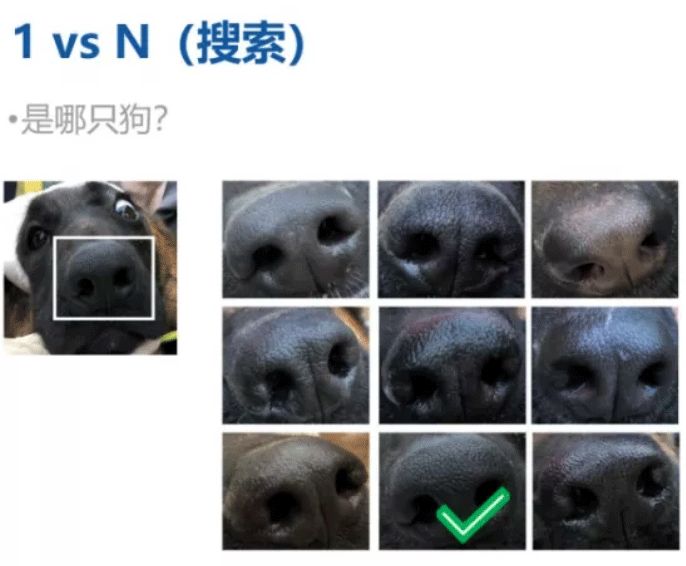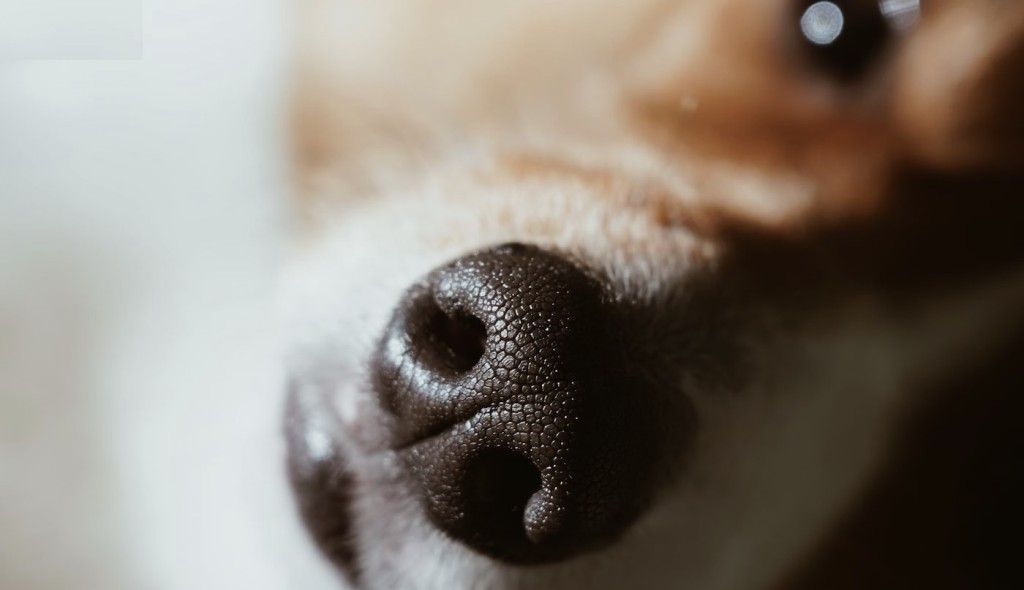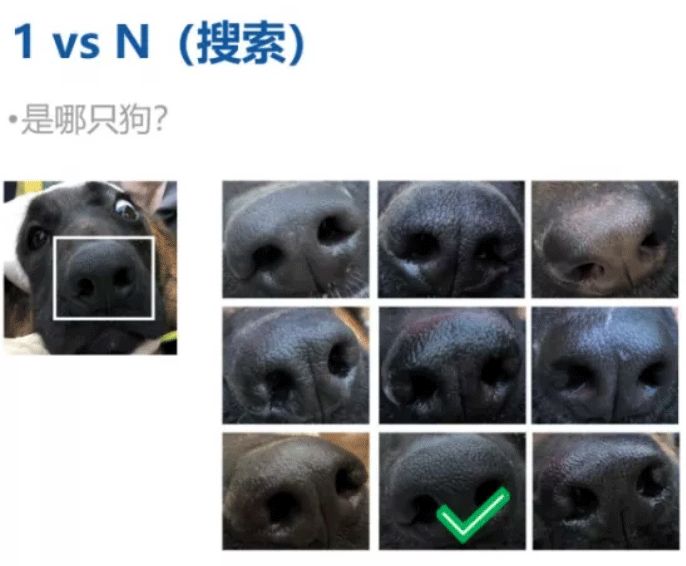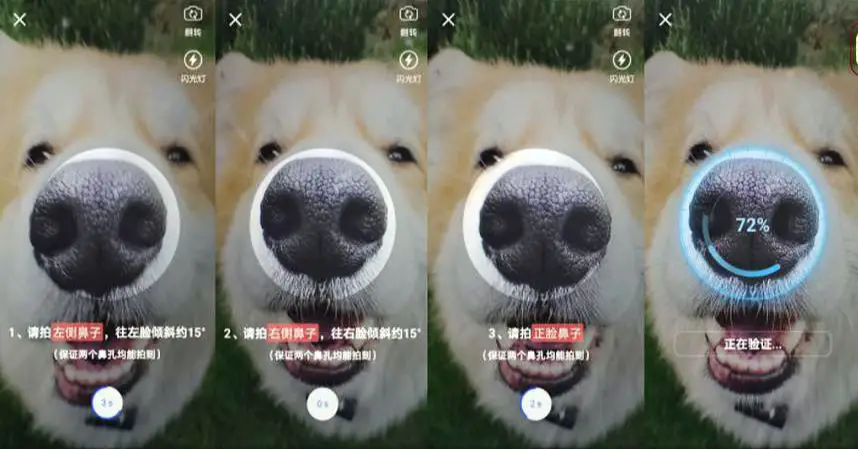Introduction
Just like human fingerprints, the pattern of ridges, creases, and bumps on a dog’s nose are completely unique to each pup. Referred to as “nose prints,” these distinctive markings have been used for decades to identify individual dogs in much the same way our fingerprints can be used to identify us.
While we’re used to fingerprints being taken by pressing inked fingers onto paper, a dog’s nose print is collected through a special inkless method. The process is quick, simple, and painless for pups. When analyzed side-by-side, it’s easy to see how no two dogs share the exact same nose print pattern.
In this article, we’ll take a closer look at how nose prints allow us to tell dogs apart, how they’re collected and used today, plus some fun facts about these special doggie fingerprints!
What Are Dog Nose Prints?

A dog’s nose print refers to the distinctive pattern of ridges, loops, and whorls on the moist surface of a dog’s nose. This pattern is formed by the wrinkles, creases, and bumps on the nose skin. Just like human fingerprints, the nose print of each dog is unique and does not change over time.
The bumps and ridges that create a dog’s nose print are formed randomly during embryonic development in the womb. As a puppy grows, the pattern becomes more defined and pronounced on the exterior skin of the nose. The nose print formations depend on how the skin folds during development and are believed to be as distinct between dogs as human fingerprints are between people.
While the color and texture of a dog’s nose may change over time, the underlying nose print remains the same from puppyhood through adulthood. Even injury or trauma will not alter the basic pattern, much like how a person’s fingerprints remain unchanged after cuts, scrapes or burns on a finger.
Uniqueness of Prints
A dog’s nose print is as unique as a human fingerprint. Just like our fingerprints, the pattern of ridges, furrows, and bumps (called nostril ridges) on a dog’s nose are distinctive to each dog.

Researchers have found that the nose print patterns on puppies are already well-defined at birth before their eyes and ears are opened. This unique pattern doesn’t change much over the course of a dog’s life.
Studies using ink pad impressions have shown that it’s virtually impossible for two dogs to have exactly the same nose print, even between identical twins or dogs of the same breed. Scientists estimate the chance of two nose prints being identical at around 1 in a billion.
The uniqueness of each dog’s nose print is why they can be used to reliably identify individual dogs, just like human fingerprints. Even slight differences in the size, shape and position of nostrils and patterns of ridges are enough to distinguish between dogs.
Identifying Dogs
A dog’s nose print can be used to uniquely identify them, similar to how human fingerprints are used for identification. The pattern of ridges, creases, and bumps on a dog’s nose is unique to each individual dog. Even dogs from the same litter will have different nose print patterns.

To capture a dog’s nose print, the dog’s nose is gently pressed onto an ink pad and then onto a piece of paper or cardstock to transfer the ink pattern. This process is quick, harmless, and painless for the dogs. The resulting nose print on the paper can then be used to identify that specific dog going forward.
Veterinarians, animal shelters, pet stores, breeders, and pet owners can all make use of nose print identification for dogs. For example, shelters may keep a dog’s nose print on file in order to reunite lost dogs with their owners. Breeders can identify individual puppies by their prints. And for households with multiple dogs, nose prints can help tell them apart!
While nose prints share some similarities with human fingerprints and are unique to each dog, they do have limitations. Over time and growth, a dog’s nose print will change and evolve just like human fingerprints. So prints taken as a puppy may not exactly match those as an adult dog. Environmental factors like scarring or weathering to the nose over the years can also alter the prints. So nose prints are best used in conjunction with other identifiers like microchips.
Creating a Dog’s Nose Print
Creating a dog’s nose print is a simple process that only requires ink and paper. Here are the steps:
1. Choose non-toxic, pet-safe ink. India or stamp pad ink works well. Make sure to use ink specifically formulated for animal use.
2. Have the dog sit or lay down to keep still during the process. It’s helpful to have a helper distract the dog with treats or pets.
3. Apply a thin, even layer of ink to the dog’s nose, covering the entire nose print area. Apply using a rubber stamp pad or cotton swab.
4. Gently press the dog’s nose down onto a sheet of white paper. Apply even pressure to transfer the ink.
5. Carefully lift the dog’s nose straight up from the paper. Avoid sliding the nose to prevent smudging.
6. Allow the ink to fully dry on the paper before handling. Protect the print from being smeared.
7. Label the print with the dog’s name and date. Store the dried print in a folder or laminate to preserve it.
And that’s it! With some practice, creating a perfect nose print is easy. Just be patient and get the dog comfortable with the process.
Nose Print Recognition
Nose print recognition works a lot like human fingerprint recognition. The overall pattern of ridges, furrows, and pores on a dog’s nose is distinct for each dog. The specific details, like the spacing and location of individual pores, are analyzed and mapped to create a dog’s unique nose print. Computer algorithms and software can then use nose print images to identify an individual dog.
Studies of nose print recognition technology have shown high accuracy rates. In one study of 100 different dogs over 4 years old, the nose print identification system was able to correctly match nose prints with over 99% accuracy. Even when the same dog’s nose was printed months apart, the system could still make a match.
Research is ongoing to further improve nose print recognition capabilities. Factors like aging, moisture levels, pressure, and image orientation can affect the print. Advanced algorithms continue to be developed to account for natural variations while still matching to the right individual. This technology holds promise for providing biometric identification for dogs in veterinary medicine, law enforcement, search/rescue, and animal shelters.
Uses of Nose Prints
A dog’s unique nose print has several practical applications:
Identifying dogs – Nose prints are used to identify individual dogs, similar to human fingerprints. Vets, shelters, kennels, and other facilities maintain nose print records to match dogs to their owners.
Search and rescue – Law enforcement agencies use dog nose print databases during search and rescue operations to identify tracks and match them to specific search dogs.
Tracking dogs – Police K9 and military units rely on nose prints to confirm which dog was responsible for locating particular pieces of evidence or contraband.
Confirming pedigree – Nose prints help verify purebred dogs during registration by matching pups to parents. Breeders use them to prevent fraudulent registrations.
Research studies – Scientists use nose print identification to monitor canine test subjects and track individual dogs in long-term studies.
Dog competitions – Major dog show organizations photograph nose prints to prevent cheating by substituting ringers for show dogs.
Crime solving – Similar to human fingerprints, dog nose prints have been used as forensic evidence in criminal investigations.
Limitations
While a dog’s nose print is unique, there are some limitations to using nose prints for identification purposes:

Quality of Print – To get a clear nose print, the dog must press their nose on an ink pad and then a paper/card. Not pressing hard enough can lead to incomplete or blurred prints.
Injuries and Aging – Injuries, scars, or aging may alter a dog’s nose print over time. This can make matching current prints to old ones difficult.
Mixed Breed Identification – Purebred dogs have more distinct nose print patterns than mixed breeds. Identifying mixed breeds from nose prints alone can be challenging.
Environmental Factors – Dirt, moisture, ink quality, and paper texture can affect the impression. Unfavorable conditions may distort the unique details of the print.
Small Noses – Smaller dog breeds have tiny nose prints that show less distinctive patterns. Identifying them is harder than larger prints.
Lack of Central Database – There is no universal dog nose print database. Identification relies on smaller collections of known dog prints.
Subjectivity of Analysis – There is some subjectivity when visually matching nose prints. Computer analysis can help but may still require human input.
Fun Facts About Dog Nose Prints
Here are some fun and fascinating facts about dogs’ unique nose prints:
-
The ridges and patterns on a dog’s nose are as unique as a human fingerprint. No two dogs have exactly the same nose print, just like no two people have the same fingerprints.
-
Puppies are actually born without nose prints. The ridges develop as the puppy grows.
-
The prints on a dog’s nose are called a rhinarium. They are created by the interaction of genetic makeup and intrauterine environment during fetal development.
-
While humans have unique fingerprints on our fingers, dogs have them on their noses!
-
Some groups use dog nose prints like fingerprints to identify dogs, especially for pet ID contests.
-
The pattern of ridges on a dog’s nose continues to grow throughout their life, creating more distinctive patterns over time.
-
Nose prints have even been used as identification in court cases involving dogs, similar to human fingerprint evidence.
-
Dog nose prints are as unique as snowflakes – no two are exactly alike!
Conclusion
A dog’s nose print is as unique as a human fingerprint. The intricate pattern of ridges, furrows, and creases on a dog’s nose creates distinctive markings that allow for identification. While nose prints have been used in various applications, from reuniting lost pets to forensic investigations, they do have some limitations. The science behind nose print identification is still developing, and environmental factors can alter prints over time. However, a dog’s nose print remains an intriguing biological feature. It serves as another reminder of the individuality present across all living beings.
In summary, key points covered in this article include:
- Dog nose prints have unique ridge patterns, similar to human fingerprints.
- Nose prints remain largely unchanged over a dog’s lifetime and can be used to identify dogs.
- Veterinarians keep nose print records to help reunite lost dogs with owners.
- Law enforcement has used nose prints in criminal investigations, but validity is still debated.
- Environmental factors like moisture and abrasion can alter nose prints over time.
- Nose print identification is not an exact science yet and has limitations.
- A dog’s nose print showcases the one-of-a-kind traits present in all living things.
By understanding what makes dog nose prints distinctive, readers gain appreciation for the singular qualities of all creatures. A dog’s nose print is a unique biological identifier reflecting their specialness as individuals.